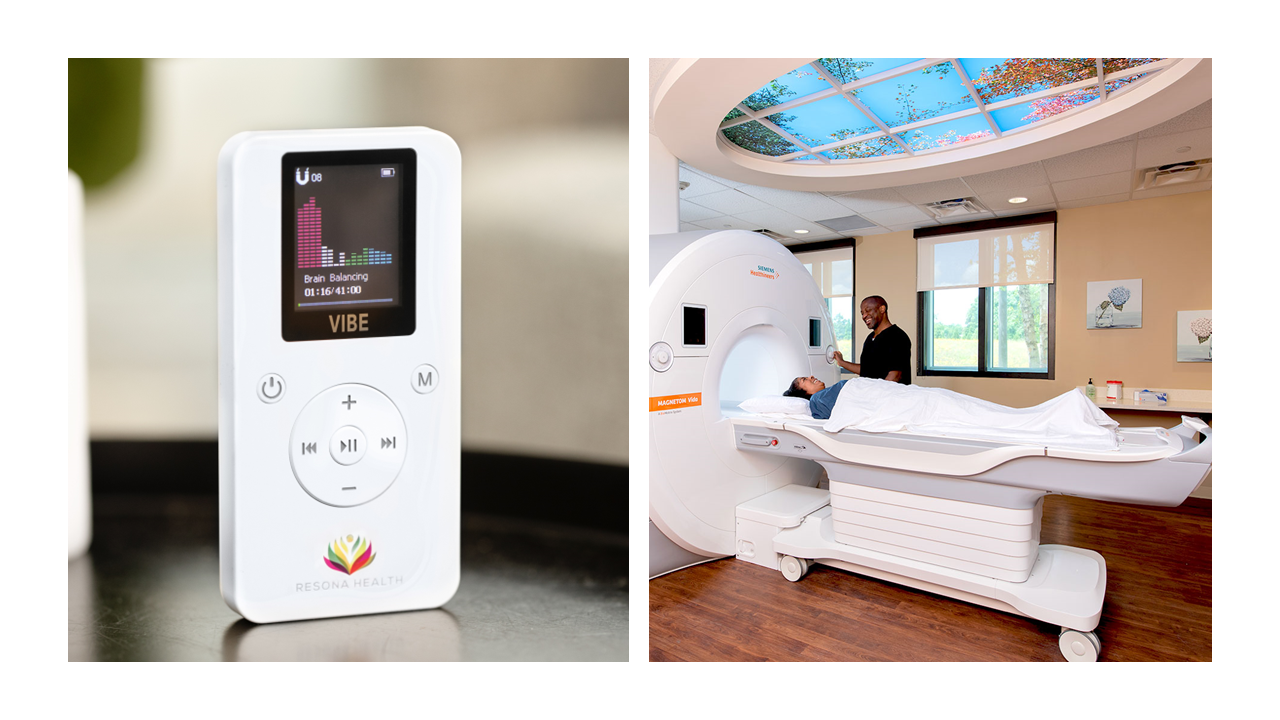The Magnetic Resonance Connection: How Both MRI and PEMF Work
Nearly every person has heard of an MRI. But think about the acronym and what it stands for.
Magnetic Resonance Imaging. The key words for the purpose of this post are “Magnetic” and “Resonance”.
MRI’s are broadly accepted as sound medical technology. But poor PEMF still gets tagged as “snake oil” by some. This makes no sense becasue they both function on similar physics and technology.
If you’ve ever undergone an MRI scan, you know just how fascinating the technology can be. But did you know that there’s a connection between magnetic resonance imaging (MRI) and pulsed electromagnetic field therapy (PEMF)? Both of these technologies rely on the power of magnetism to influence our bodies in different ways. In this blog post, we’ll explore the science behind both MRI and PEMF, and explain how they work together to help us better understand our health.

Introduction to Magnetic Resonance
Magnetic resonance is a phenomenon that occurs when certain materials are placed in a magnetic field. When this happens, the material’s atoms align themselves with the magnetic field and create a small magnetic field of their own. This alignment and resulting magnetic field is what allows MRI machines to work.
PEMF therapy also uses magnetic fields, but instead of using them to create images, PEMF therapy uses them to deliver pulses of energy to the body. This energy can help to improve circulation, reduce inflammation, and promote healing.
What is MRI?
Magnetic resonance imaging (MRI) is a medical diagnostic technique that uses a magnetic field and radio waves to create detailed images of the organs and tissues in the body. MRI does not use ionizing radiation, making it a safe and effective diagnostic tool.
PEMF therapy uses pulsed electromagnetic fields to deliver beneficial energy to the cells in the body. PEMF therapy has been shown to be safe and effective for a variety of conditions, including pain relief, improved circulation, and faster healing.
Both MRI and PEMF therapy are non-invasive, safe, and effective ways to improve health and well-being.
What is PEMF?
Pulsed electromagnetic field (PEMF) therapy is a form of alternative medicine that uses magnetic fields to heal the body. PEMF has been used for decades to treat a variety of health conditions, including pain, inflammation, and arthritis.
PEMF therapy works by sending magnetic pulses through the body, which stimulate cells and promote healing. The therapy is thought to work by improving blood circulation, reducing inflammation, and promoting cell regeneration.
How Do They Both Use Magnetic Resonance?
Magnetic resonance imaging (MRI) and pulsed electromagnetic field therapy (PEMF) both use magnetic fields to produce images or provide therapeutic benefits, respectively. But how do they both use magnetic resonance?
Both MRI and PEMF use a magnetic field to produce images or provide therapeutic benefits. MRI uses magnetic resonance imaging, while PEMF uses pulsed electromagnetic field therapy.
With MRI, a strong magnetic field is used to align the nuclei of atoms in the body. Radio waves are then sent through the body, which cause the nuclei to spin and emit a signal that is detected by the MRI machine. This signal is then converted into an image.
PEMF also uses a magnetic field, but instead of producing images, it uses the magnetic field to deliver pulses of energy to the body. These pulses can help improve blood circulation, reduce inflammation, and promote healing.
Technical Comparison of MRI and PEMF
MRI (magnetic resonance imaging) and PEMF (pulsed electromagnetic field therapy) are both medical technologies that use magnetic fields to create images or provide therapeutic benefits. MRI uses strong magnetic fields to produce detailed images of the inside of the body, while PEMF uses weaker magnetic fields to stimulate cell repair and regeneration.
While both MRI and PEMF are safe and effective medical treatments, there are some key differences between the two. MRI is a much more expensive and invasive procedure than PEMF, as it requires the use of large, specialized equipment. Additionally, MRI can only be performed by trained professionals in a hospital or clinic setting, while PEMF can be done at home with a portable device.
PEMF has been shown to be particularly effective in treating pain, inflammation, and wounds. It is also being studied for its potential to improve cognitive function and treat depression and anxiety. In contrast, MRI is mostly used for diagnostic purposes and does not have any proven therapeutic benefits.
Benefits of Each Method
There are many benefits to using MRI and PEMF therapy. Each therapy has its own unique benefits that can help patients in different ways.
MRI is a very effective way to diagnose problems within the body. It can be used to detect tumors, aneurysms, and other abnormalities. MRI can also be used to monitor the progress of diseases such as Alzheimer’s and Parkinson’s.
PEMF therapy has a wide range of benefits. It can improve circulation, reduce inflammation, and promote healing. PEMF therapy has also been shown to be effective in treating conditions such as PTSD, depression, anxiety, and insomnia.
Conclusion
In conclusion, the magnetic resonance connection between MRI and PEMF is a fascinating one. They both use magnets and resonance to achieve their goals.
The bottom line is MRI is a diagnostic tool and PEMF is a therapeutic tool, but they both rely on magnetism and resonance.
MRI technology is accepted by the public as sound, crucial, medical technology. No doctor ever calls MRI Voodoo.
PEMF deserves the same respect.


